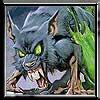Hey guys,
I'm in the process of designing the scenes for unlockable characters (either from main story or side story) for my RPG. They are unlocked by progressing the game by satisfying certain conditions such as, character A or B has to be at level 50, have good friendship with each other, unlocking quest C, and therefore trigger a cutscene when reaching certain area. Sometimes this may happen during the main story progress, or sometimes they don't (sidequest).
What I don't understand is how to organize them. For example I have a main structure of scenes (screenplay? I don't know how to call this):
- Prologue
- Pick a Card
- a) [If Card A is chosen] Rebecca joins the party. b) [If Card B is chosen] Ron joins the party.
- ...
That's what I have in mind, but the thing is this 3a or 3b can branch to even more unlockable characters with different choices that the graph becomes quite complex. Like, it's not 3a or 3b anymore, it becomes 3a.1.1.2 or 3.a.1.1.3.. which doesn't make sense as they branch. They don't really have a sequence. I have no idea how to organize this well in a single document.
Should I just separate them by Character?
Like..
1. Ron
Unlocked by choosing Card B during scene 3.
Scenes:
1. Ron Joins the party.
2. ...
But then I don't know how to sequence them along with the main scenes.
Or should I just differ it by quest?
I hope it's clear enough, cheers.






